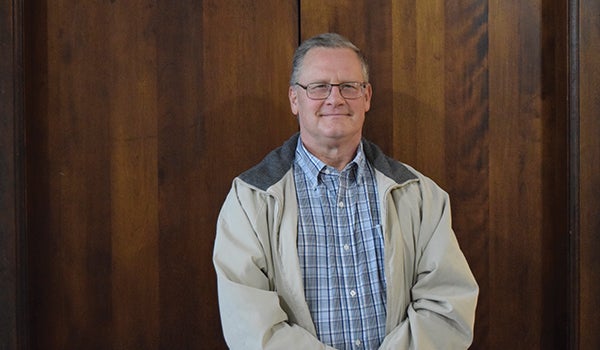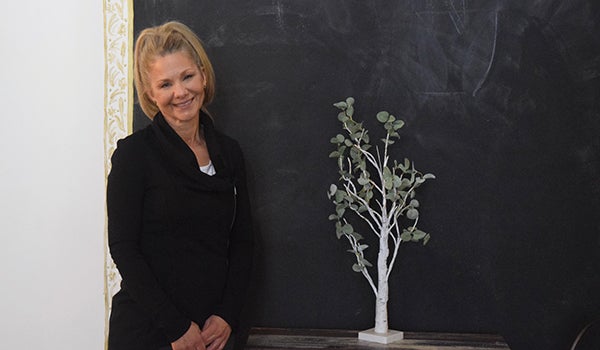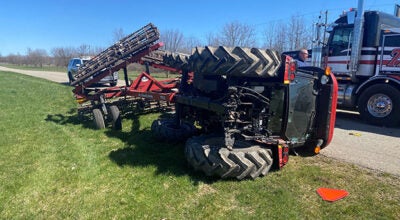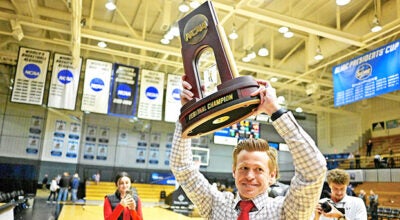Niles man, Buchanan woman share experiences from COVID-19 vaccine clinics
Published 1:48 pm Friday, May 7, 2021
|
Getting your Trinity Audio player ready...
|
BERRIEN COUNTY — As COVID-19 vaccinations have become available throughout southwest Michigan, volunteers have continually been sought to staff the clinics they are administered through.
In late January, both Spectrum Health Lakeland and the Berrien County Health Department sent a release out asking for the community to help the organizations guide patients through the clinics as immunizations were pushed into arms.
As of Thursday afternoon, the Michigan COVID-19 vaccination coverage dashboard showed 39 percent of Berrien County residents and 26.8 percent of Cass County residents had completed their immunizations.
For Cheryl Haslock, from Buchanan, and David Driggs, from Niles, volunteering in multiple vaccine clinics, each organized by Spectrum Health Lakeland, has meant spending nearly eight hours rotating through all the positions that make a clinic run smoothly.
During a visit to a Spectrum Health Lakeland-run COVID-19 vaccine clinic, patients are guided through the entire process from the parking lot, checking in to paperwork, they are shown to an available nurse for the injection, and then are led to a waiting area where they spend 15-minutes making sure they are not having an allergic reaction before leaving.
All clinics have another thing in common: the driving force of local community members volunteering to help in the vaccination efforts.
Both Haslock and Driggs have worked their way through the rotation of duties as a volunteer in the Spectrum Health Lakeland clinics. Haslock has volunteered with four clinics and Driggs with nine.
“The biggest thing they taught us was to make sure that everybody felt OK, that they were at ease, and there was nothing to worry about,” Haslock said.
Haslock said she has worked in clinics with 1,500 to 3,5000 patients. The larger one had the Michigan National Guard onsite helping to administer the shots.
“I think my favorite position was when I worked right with the nurse, and helped get people ready for their shot,” Haslock said.
The position involved reading the patient’s paperwork and flipping the chair next to the nurse so the patient’s preferred arm was presented to the nurse.
Driggs’ favorite part of the position rotations was the “gatekeeper,” which guides patients to open
nurse stations.
“You get to talk to everybody there,” Driggs said. “If it’s a big crowd, the day goes quick, because it’s constantly moving. The nurse’s assistant is probably the most ‘glamorous’ position, but you’re face to face with clients in every position.”
Haslock signed up to volunteer with Spectrum Health Lakeland after getting her shot through the health department.
Her niece works with the BCHD, and informed her of the hundreds of volunteers the county needed to run the clinics.
“All of these people that work at Spectrum Health and the health department, they have their regular jobs to do,” Haslock said. “They still have to carry their workload, plus do this. That’s why our community is so
important.”
She said at the clinics she has volunteered at, she has witnessed emotional responses to the vaccines.
“For me, [it was] just seeing how people anticipated their turn and to see what a relief it was for them,” Haslock said. “To be experiencing that with people and to be a part of that? I know how I felt – I felt like it was Christmas. Just to be a part of knowing that I could be a part of where I was needed.”
During her experiences working at the clinics, Haslock saw the effort that goes into organizing and running them.
Haslock recalled seeing a coordinator from Spectrum Health Lakeland showing up first thing in the morning and being the last one to pull the flags out of the parking lot at night. She would get emails in the evening and at night about upcoming volunteer opportunities.
“They are true heroes,” Haslock said. “They didn’t miss a beat.”
Driggs volunteered in one of the vaccine clinics on Wednesday, and said the demand has waned over the last few months.
“It’s a huge slowdown. There is more availability, and people are taking advantage of it,” Driggs said.
Driggs has volunteered at clinics where they planned to give between 1,000 and 3,600 doses, and recipients in the hundreds showed up.
“It’s looking like [clinics] are going to move to smaller churches, schools and into more rural areas,” Driggs said. “It’s going to be a problem as far as volunteering. It takes a lot of
volunteers.”
Driggs is semi-retired, and when he became eligible for the shots, he attempted to get on lists anywhere
he could.
“I registered for every single shot I could find,” Driggs said. “I got a called and dropped everything to get it.”
Volunteering at the clinics was a way Driggs could find social interaction again after a year of
physical distance.
“I thought it would be nice to be around people for a day. One or two days a week, it seemed like a good thing,” he said.
Driggs volunteers through other organizations as well.
As he sought interaction, he realized the way to get back to “normal” was through the vaccine.
“I want to get back to life the way it was. Right now, it’s terrible. We have these shots to give, and we’re not hitting the number we need to open things up,” Driggs said.
He hopes others will volunteer, and encourage their loved ones to get vaccinated as well.
Taking care of one another, and getting back to a sense of community, is a common thread both Driggs and Haslock shared in volunteering to help others through the COVID-19 vaccination process.
Haslock formerly taught health and wellness based in Ayurveda, yogic practices. Part of what she has learned to live by, and teaches others, is taking care of those around you.
“Part of being involved in your community, thinking of yourself and your community as a whole and the world as a whole is extremely yogic,” Haslock said. “I wouldn’t want to just sit in my home and let this pandemic pass. If there’s anything I can do, I will do.”








